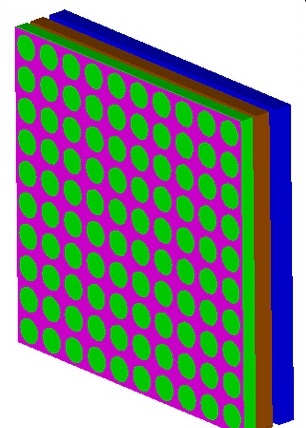Benefits
Efficient Solutions for planar noise control treatments
Based on analytical solutions that do not require tedious modeling of the layers. It only requires the layer type,
layer configuration, material properties and thickness of each layer as input for performance evaluation.
Multiple Solutions Methods
Multiple solution options, including transfer matrix method for bonded and unbonded multi-layer treatments
and four-pole method for exact representation of
unbonded layers are available. The effect of finite size is also considered in the prediction.
Extensive Analysis Capabilities
Predicts acoustical performance such as sound transmission loss and absorptions coefficient. Estimates macroscopic
material properties of a wide variety of material combinations.
Broad material library
Models a wide variety of materials such as elastic foam, rigid foam, limp foam, fibrous foam, impervious screen,
resistive screen, elastic solid, elastic, panel, and perorated screen.

